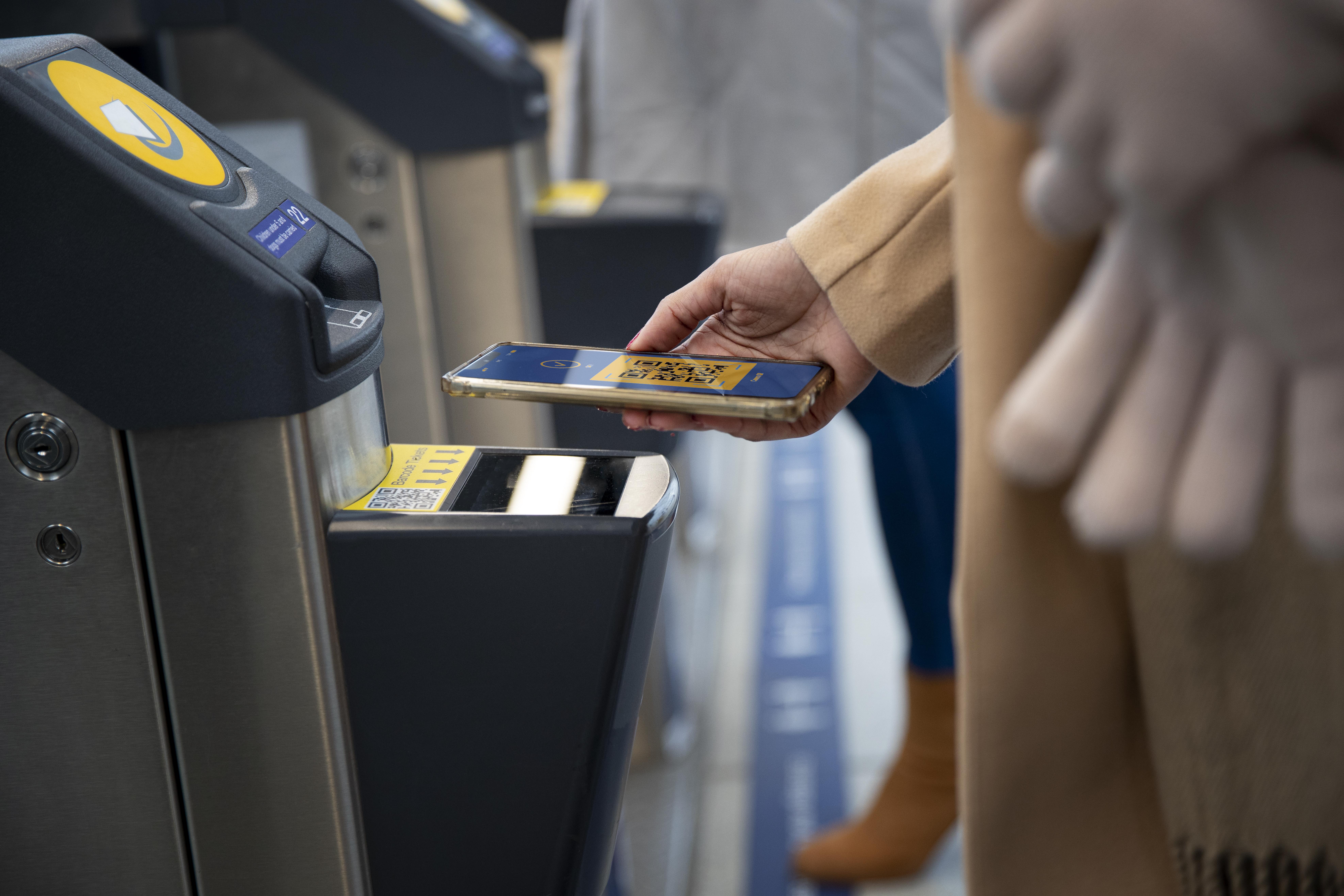Table of Content
Try Vizitor for Free!

Tue, Jan 7, 2025
Read in 8 minutes
Have you ever walked into a store or office and found yourself waiting in a never-ending line, only to feel frustrated because there aren’t enough employees to manage the crowd?
Or perhaps you’re running a business that’s understaffed and struggling to keep up with the increasing demands of customer service.
The reality is, understaffed businesses face a host of challenges—from managing long queues to dealing with administrative overload. But what if there was a way to tackle these problems head-on without hiring additional staff?
The answer lies in Digital Queue Management Systems also called Virtual Queue Management—an innovative solution that’s transforming the way businesses operate, especially when resources are limited.
These systems not only streamline the customer experience but also lighten the load on staff, making it possible to deliver high-quality service even with fewer hands on deck.
Let’s explore how a digital queue management system can be a game-changer for your business.
The Struggles of Businesses: Why It’s More Than Just a Staff Shortage
Running a business with fewer employees isn’t just about having fewer hands; it’s about managing a growing set of challenges that can affect customer satisfaction and overall productivity.
Running an enterprise with less employees may seem like an easy cost-saving measure, but it comes with its own set of hurdles.
Let’s explore the key pain points that understaffed businesses commonly face:
1. The Nightmare of Long Wait Times
Long queues can be the worst challenge for a business, especially when there are not enough staff members to manage the influx of customers.
As wait times increase, customer frustration mounts, leading to a negative experience that can impact brand loyalty.
Did you know? 66% of customers leave a business after waiting more than 5 minutes.
For an understaffed business, this statistic is a huge concern.
2. The Overload of Administrative Tasks
Lesser staff businesses often depend on their small team to juggle a variety of responsibilities, from customer service to administrative duties.
Scheduling, checking in customers, and managing queues all fall under these tasks.
This manual workload creates inefficiencies and leaves employees overwhelmed, further impacting the business’s ability to serve customers effectively.
Studies show that Automated processes free up to 30% of employees’ time, enabling them to focus on high-priority tasks.
3. The Challenge of Maximizing Limited Resources
When resources are less, businesses face the challenge of trying to do more with less.
Employees are often forced to wear multiple hats, which can result in errors and reduced attention to customer needs. Managing customer flow with fewer employees becomes a daunting task, and without a system in place, productivity drops.
4. Inefficient Queue Management and Disorganization
Without an efficient system, queue management can become chaotic. Customers may not know when it’s their turn, and there may be confusion among employees about who’s next.
Inefficient queue handling can lead to operational bottlenecks, customer dissatisfaction, and missed opportunities.
5. Customer Disengagement
In a traditional system, communication about wait times or delays is often unclear. Customers who are left in the dark about their position in line are likely to become disengaged or frustrated.
Without proper notifications or updates, your customers may grow impatient and leave before being served.
6.Lack of Data-Driven Insights for Improvement
Many businesses still rely on traditional methods to track customer behavior and queue management, which makes it difficult to gather valuable insights.
Without data-driven analysis, businesses are missing out on opportunities to optimize staff allocation, customer flow, and service quality.
7. Negative Impact on Brand Image
Understaffing can result in poor customer service experiences.
Slow service, disorganization, and long wait times are common complaints. These negative experiences can quickly damage a business’s reputation, especially in the age of online reviews and social media.
Why Waiting in Line is a Thing of the Past: The Rise of Digital Queues
Waiting in line has always been a frustrating experience, both for customers and businesses alike.
Long queues can lead to lost sales, poor customer satisfaction, and increased operational costs. But with the rise of digital queuing systems, the traditional waiting experience is being redefined.
How Digital Queue Management Systems Help: The Solution to Your Staff Problems
Understaffed businesses often face a unique set of challenges that can directly impact customer satisfaction, employee performance, and overall operations.
But, digital queue management systems can be the game-changer for understaffed or lesser staffed businesses, offering solutions that reduce strain on your employees and enhance their productivity.
1. Eliminating Long Wait Times and Customer Frustration
One of the primary pain points for businesses with limited staff is long customer wait times. Without a proper queue management system, customers are left standing in line for extended periods, which can lead to frustration and dissatisfaction.
A digital queue management system like Vizitor streamlines the entire waiting process. Customers can join a virtual queue, check their status, and receive real-time notifications when it’s their turn.
This reduces the time spent physically waiting in line, which enhances the overall customer experience and keeps them engaged without feeling frustrated.
2. Reducing Overwhelming Administrative Tasks for Employees
With digital queue management, much of the administrative work is automated. Employees no longer need to manually track queues, manage appointments, or provide status updates to customers.
Instead, the system takes care of most of the administrative tasks, freeing up your staff to focus on more important, value-added activities.
3. Improved Staff Utilization
In an understaffed business, it’s essential to make the most of the limited workforce available.
A virtual queue system allows staff to focus on assisting customers without worrying about managing the queue physically.
Customers can be served on a first-come, first-served basis or based on priority, but employees don’t need to be physically present in the queue to manage it.
4. Enhancing Communication and Customer Transparency
Without a digital queue management system, customers often feel uncertain about their position in line or how long they’ll need to wait.
Digital or Virtual queue systems offer real-time updates on customers’ queue status through mobile apps or display screens, ensuring that customers are always informed.
Customers can even receive reminders and updates on when their turn is approaching, reducing anxiety and helping them plan accordingly.
5. Optimizing Business Operations with Data-Driven Insights
In an understaffed business, it can be difficult to understand peak hours, customer preferences, and areas that need improvement.
Most Virtual queue management systems come with integrated analytics, providing businesses with insights into customer behavior, peak times, and wait times.
This data allows businesses to make informed decisions about staffing levels, service offerings, and customer engagement strategies.
6. Self-Service Options for Customers
When businesses have limited staff, it can be challenging to provide personalized attention to every customer.
Digital queue systems offer self-service options that allow customers to check in, join a queue, or update their status without requiring staff assistance.
Self-service kiosks or mobile apps allow customers to manage their waiting experience on their own. They can join a virtual queue, track their wait time, or receive notifications when it’s their turn—without needing to interact with a staff member at all.
7.Reducing Customer Walk-Offs
Understaffed businesses often lose potential revenue because customers walk away due to long wait times or disorganized queues.
By improving queue management with a digital system, customers can be kept informed, reducing the chances of them leaving before receiving service.
Additionally, with shorter wait times and better service, customers are more likely to stay and complete their purchases.
8. Boosting Brand Reputation
Digital queue management systems contribute to a positive customer experience, helping businesses build a strong brand reputation by delivering efficient and transparent service.
9.Managing High Traffic During Peak Hours
Low staffed businesses struggle the most during peak hours, with more customers and fewer staff to serve them.
A virtual queue management system can prioritize customers, create different queues for specific services, and evenly distribute foot traffic across different areas, all of which help during rush hours.
10. Cost-Effective Solution
Staffing shortages don’t always have to mean increased operational costs.
A digital queue management system helps businesses streamline operations and reduce the need for additional hires, making it a cost-effective solution for businesses looking to stay efficient without increasing their payroll.
Case Study:
San Diego State University (SDSU) faced challenges with physical queues at their student services offices, leading to crowded waiting areas and decreased student satisfaction.
SDSU implemented a digital queue management system that allowed students to join virtual queues, reducing physical crowding and wait times.

Vizitor: The Ultimate Digital Queue Management Solution
At Vizitor, we understand the challenges faced by understaffed businesses. Our advanced digital queue management system helps streamline operations, reduce wait times, and enhance customer satisfaction.
With features like real-time notifications, virtual queues, and self-service options, Vizitor empowers businesses to offer a seamless, efficient, and contactless experience.
Whether you run a retail store, healthcare facility, or office, Vizitor is designed to improve your operations and ensure that your customers receive the best service, even with limited staff.
Ready to Transform Your Business?
Don’t let understaffing hold your business back. With Vizitor’s digital queue management system, you can enhance efficiency, improve customer satisfaction, and streamline your operations—all while reducing the stress on your team.
Contact us today to learn how Vizitor can help your business thrive, even with fewer staff.
Schedule a demo and see the difference for yourself!









